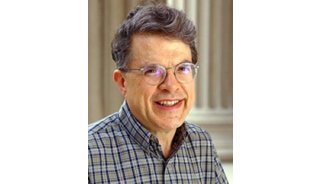James Hardwick CNBr Cleavage Procedure
1. Immunoprecipitate the protein and run it on a preparative gel. CNBr cleavage must be done with protein transferred to a nitrocellulose filter. Neither Immobilon nor Nylon can substitute.
IMPORTANT: Wash the NC 2X for 15 min in deionized H2O after the transfer is complete. This removes any residual Tris-glycine that seems to affect the migration of the CNBr fragments during SDS-PAGE.
2. Cut out the piece of NC containing the protein and immediately put it into a microfuge tube containing 200 microliters of 100mg/ml CNBr in 70% formic acid. CNBr stocks are 200 milligrams/ml in 70% formic acid and are stored at -70°C. 70% formic acid is made from 98-100% formic acid and MQH2O.
Optional: If you want to know how many total counts you have in each membrane piece, place the cut out pieces of filter in H2O and count them (Cerenkov) before you place them in the CNBr.
3. Incubate the protein in CNBr at room temp. for 1.5hr. Increased digeston time does not increase yield.
4. Spin 1-5 min in the microfuge. Transfer supe. to a new microfuge tube.
5. Speed Vac dry (30min for 200 microliters).
6. Resuspend in 500 microliters of MQH2O and dry on the speed vac again (approx 2 hrs.). This should get rid of the residual formic acid.
Kunxin resuspended in 40 microliters in order to save time. Resuspending in larger volumes removes more of the formic acid and results in better resolution of the cleavage products.
7. Count (Cerenkov) both the dried samples and the membrane pieces they were released from. Your yield should be between 85-95%.
7. Resuspend in 20-40 µl SDS gel sample buffer. The sample buffer should remain blue. If it turns yellow, residual formic acid is present and will cause your samples to run badly . Tris buffer (1 µl of 1M Tris pH 8.0) can be added to raise the pH.
8. Run on a 24% low bis Tricine gel. Use rainbow markers as MW indicators. It takes approximately 9 hours to run the bromphenol blue off of a long gel using a constant current of 50 mA. If you need to resolve multiple bands below 4kD, then use a separating gel in addition to the stacker and resolving gel. See the reference below.
9. For reference, a sample with 100 cpm must be exposed for 2-3 days with a screen to see a strong signal.
Tris Anode (lower) Buffer 1 liter
| 0.2 M Tris pH 8.9 | 24.2 g Tris base |
| Bring to 1 liter with water--adjust to pH 8.9 with HCl |
Tricine Cathode (upper) Buffer 1 liter
| 100mM Tris | 12.1 g Tris base |
| 100mM Tricine | 17.9 g Tricine |
| 0.1% SDS | 1 g SDS |
| MQH2O to 1000ml (don't need to adjust pH) |
24% low bis gel--25 ml (one long gel)
| 24% Acrylamide | 15 ml 40% Acrylamide |
| 0.054% Bis | 1.36 ml 1% Bis |
| 1 M Tris | 8.3 ml 3M Tris HCl pH 8.45 |
| 0.1% SDS | 0.25 ml 10% SDS |
| Temed | 20 microliters 100% Temed |
| Ammonium persulfate | 0.20 ml 10% Ammonium persulfate |
Stacking Gel--10 ml
| 4% Acrylamide | 1.33 ml 30% Acrylamide |
| 0.1% Bis | 1 ml 1% Bis |
| 1 M Tris-HCl | 3.33 ml 3 M Tris-HCl pH 8.45 |
| 0.075% SDS | 75 microliters 10% SDS |
Plus the usual amounts of Temed and Persulfate.
References:
Buffers, pH, stacking gel recipe from:
Schagger, H. and von Jagow, G. (1987). Anal. Biochem. 166, 368-379.
Acrylamide:Bis ratio for resolving gel from Kunxin's old protocol.
Luo, K., and Sefton, B. M. (1990) Transfer of proteins to membranes facilitates both cyanogen bromide cleavage and two dimensional proteolytic mapping. Oncogene 5:921-923.
-
焦点事件









